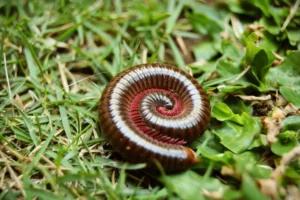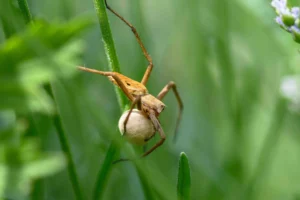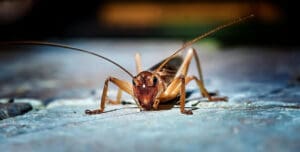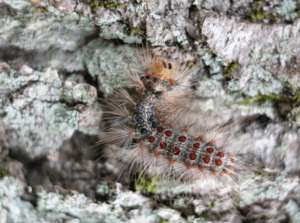
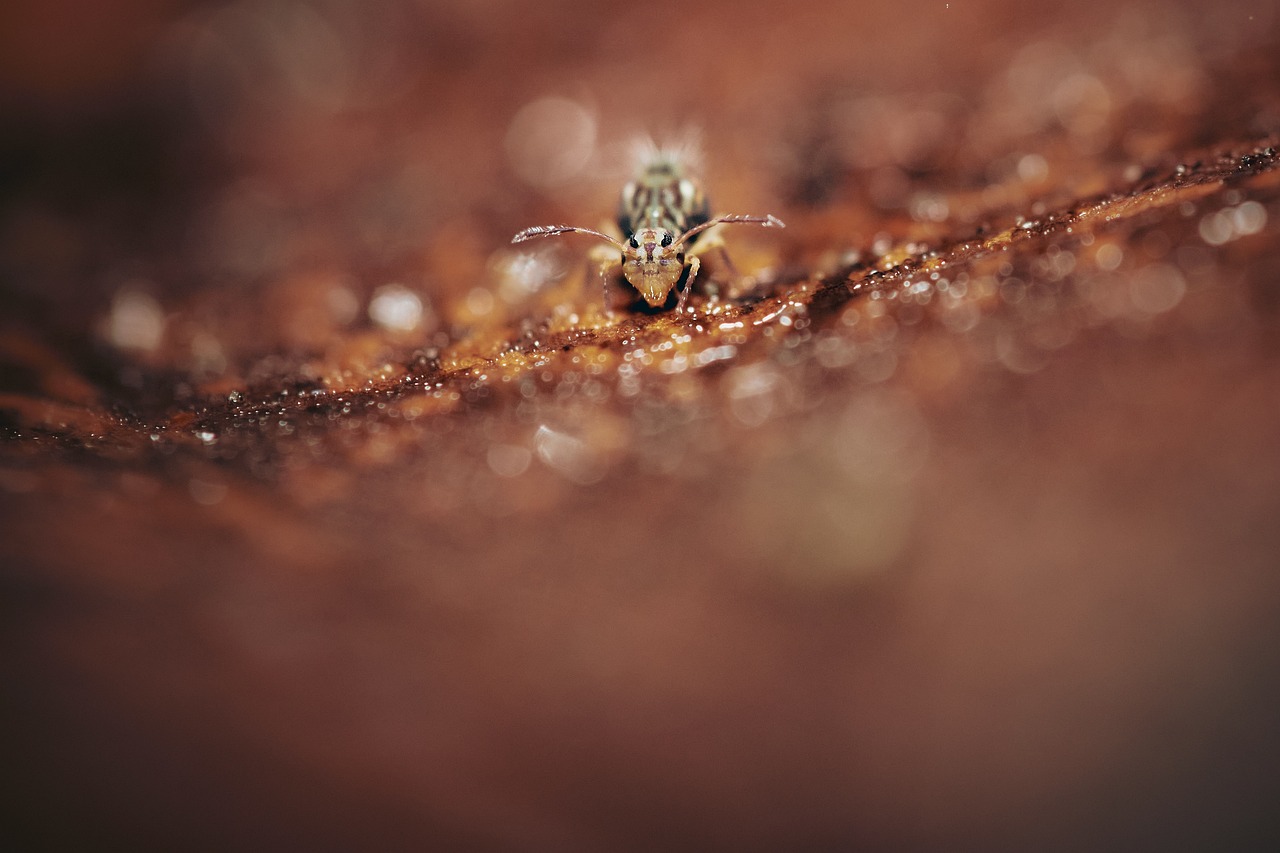
Springtails- they may be a nuisance when their populations boom, but fortunately, they are harmless. However, they are commonly mistaken for other creatures, like fleas, who are not so harmless. Eliminating springtails is much simpler than eliminating pests like fleas, so proper identification of the pest on your property is a vital first step. Think you may have springtails? Read on to find out.
Exploring the Variations in Springtail Appearance
Color Range Springtail species vary drastically in color with some being brightly-colored and others having a more muted appearance. Springtails may be white, yellow, brown, red, black, gray, blue-gray, or even purple. Size Springtails are tiny creatures that range in size depending on species. They are almost always less than 6 mm in length and most are even smaller, only reaching around 2 mm in length. They are usually no smaller than 0.7 mm long. Body Shape Most springtails have slender, elongated, cylindrical bodies. However, there are species that are stout and globular, and still others that have somewhat flattened bodies.Understanding the Anatomy of Springtails
Due to their body structure springtails are often thought to be insects, and for many years they were considered such. In reality, though, they are a kind of arthropod called hexapods. Springtails have three body segments: the head, the thorax, and the abdomen. Their heads are small and hold a pair of short, segmented antennae. Their antennae typically have between 4 and 6 segments. Springtails have segmented thoraxes and abdomens as well. The thorax is made up of three segments, each of which holds a pair of legs. The abdomen can have up to 6 segments and has a forked, tail-like appendage called a furcula attached to the final segment. Springtails do not have wings.Distinguishing Characteristics of Springtails
Furcula: The Springing Tail Mechanism Most often springtails move around by crawling, however since they cannot fly away from danger, they rely on their furculae to jump far distances. Springtails are so named because of their furcula, which is the spring-like tail appendage that allows them to jump. At rest, the furcula is folded underneath the abdomen and held in place by a clasp-like appendage called the retinaculum. When the retinaculum releases, the furcula snaps downwards against the ground and launches the springtail into the air. A springtail’s entire jump occurs in as little as 18 milliseconds and they fly through the air at a rate of 4 to 5 feet per second, though they can only actually jump distances of 3 to 4 inches. Unfortunately for springtails, their jumps are not exactly a smooth ride. They cannot aim their jumps, so their landing zone is completely random. In addition, globular species of springtails spin as they fly through the air at a rate of 74 rotations per second or 22,440 rotations per minute. Eyes and Sensory Structures: Detecting Light and Vibrations Springtails appear to have two eyes. They do not have compound eyes like insects but rather two groups of ocellated or simple eyes. Each group of eyes looks like a dark-colored single eye, but it is actually a clump of up to 8 single eyes. Springtails have limited vision, but they are able to sense vibrations which helps them navigate their surroundings and sense danger.Springtails vs. Other Common Insects: How to Differentiate Them
Springtails vs. Fleas: Spotting the Differences Springtails may sometimes be called snow fleas, though they are not true fleas. Springtails and fleas are roughly the same size but that is where their similarities end.-
- Fleas are flat and difficult to crush due to their hard exoskeletons, whereas springtails are cylindrical or rounded and very easy to crush.
-
- Unlike springtails, who have noticeable antennae, a flea’s antennae are hidden.
-
- Fleas have long back legs that they use to jump while springtails’ legs are all the same length and they use a furcula to jump.
-
- Fleas are almost always dark in color, but springtails range in color from light to dark.
-
- Finally, springtails do not bite and are considered a nuisance pest while fleas do bite and can be quite harmful.
Habitat and Behavior: Where to Find Springtails and What They Do
Preferred Environments Springtails are extremely moisture-sensitive creatures that can be found throughout the United States. They absorb water and oxygen through their bodies and they dry out easily without enough water, which is one of the reasons why they are always found in very damp areas. That being said, they cannot swim, so they stick to areas that are damp but not flooded. Another reason they prefer moisture-laden areas is because of their preferred food. Feeding Habits: Detritivores and Decomposers Springtails are called detritivores, which are a form of decomposers. Decomposers break down and consume decaying organic material. Most decomposers are bacteria and fungi who digest and absorb the nutrients from decaying material by secreting enzymes; in other words, they digest material externally. Detritivores, however, actually eat decaying material and then digest it internally. Earthworms are a common example of detritivores. Springtails like to eat decomposing organic material, as well as the bacteria and fungi that grow on the decaying matter. In order for organic matter to decay or grow bacteria and fungi, plenty of moisture is needed- which is the other reason springtails favor damp environments. A springtail’s exact diet depends on its species, but most stick to decaying leaves and plants, molds and mildews, bacteria, decomposing animal carcasses, animal droppings, and pollen. Some species are predatory.The Role of Springtails in the Ecosystem
Decomposition and Nutrient Cycling: Cleaning Up Organic Matter Because of their diet and lack of danger to humans, springtails are considered a beneficial arthropod. They are an important member of the ecosystem, as they help to recycle the dead organic material that piles up on the forest floor. As they break down material, they improve soil structure and provide necessary nutrients to living plants.Tips for Spotting Springtails in Your Environment
Garden and Yard Sightings Outdoors, springtails can be found almost anywhere that has a high moisture content. They prefer damp soil, decaying logs, piles of dead organic material (i.e. leaf and debris piles), mulch, the areas surrounding ponds and pools, and even snow. They also like to gather around drain lines, air conditioners, spigots, gutters, and leaky outdoor pipes. Common Indoor Areas of Infestation If springtails have infested an outdoor area that is near a building, they may move into the building to seek even more habitable areas. They may also migrate indoors if outdoor conditions are too dry. Once they are indoors, they are usually found around leaky faucets and pipes, in the soil of houseplants, or in naturally damp spaces like basements and crawlspaces.Dealing with Springtails
Prevention Methods The most effective way to rid your property of springtails is by eliminating all excess moisture. Here are some of the best ways to do this:-
- Repair leaky pipes, faucets, and spigots
-
- Avoid overwatering flowerbeds and houseplants
-
- Remove or replace wet, moldy, or decaying wood
-
- Limit the amount of mulch on your property
-
- Promptly remove leaf and debris piles
-
- Ensure that drainage systems and gutters and clear and properly carry water a safe distance away from the building
-
- Fill in any holes or divots in the ground that may collect rainwater
-
- Place a dehumidifier in damp indoor areas




